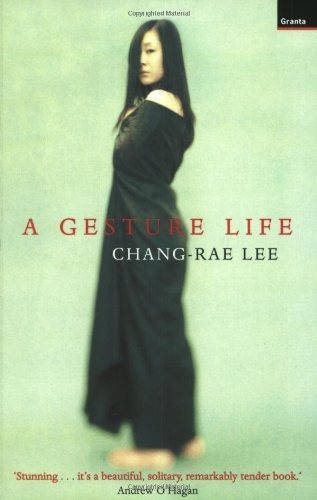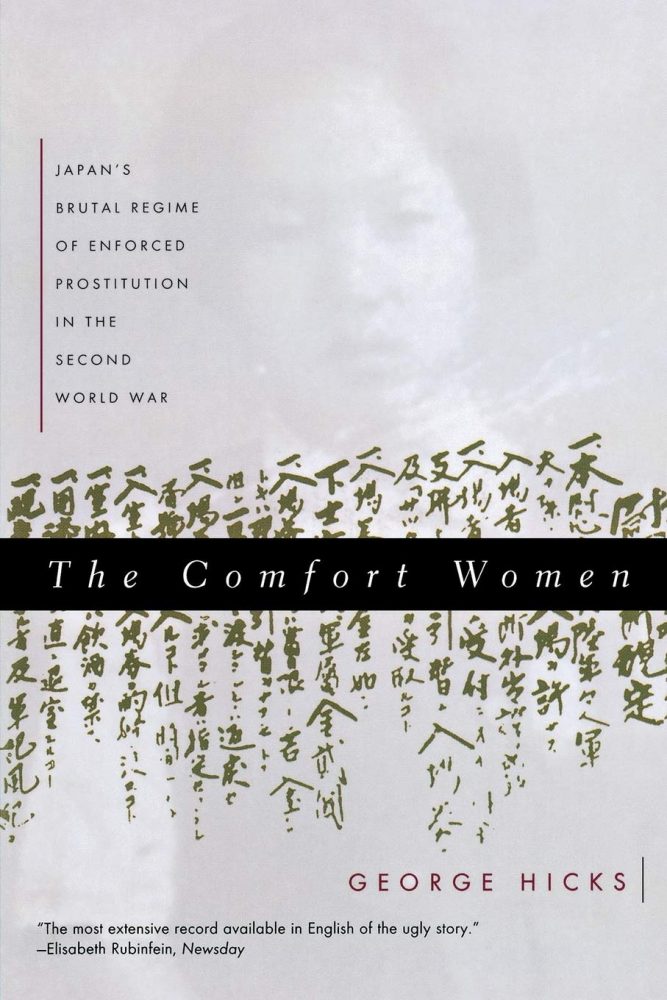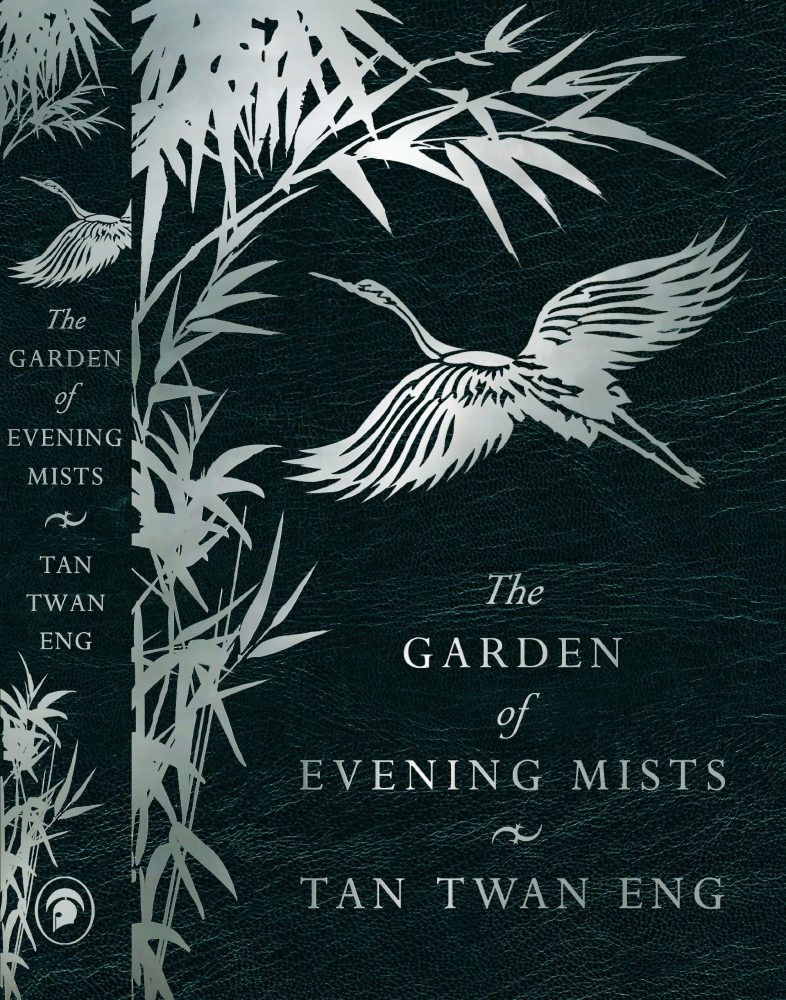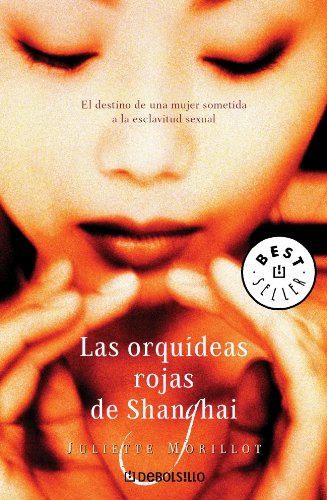I write about dark tourism for a living and I read a lot of books about the atrocities that happen in our world. Although I had previously read a few of the non-fiction books of this list, in 2019, I went down a bit of a rabbit hole and began reading everything I could find connected to comfort women. So here is the most comprehensive list of books you will find on the topic. But first, a look at the term ‘comfort woman’ and what happened.
*“Comfort Women” is the Japanese Imperial government’s euphemism for the women and children they trafficked as sex slaves between 1932 and 1945, until the end of World War II. Monuments for the “Comfort Women” are being built around the world to memorialize the victims and their communities and to educate new generations of the dangers of warfare and a global responsibility to protect human rights.
– from remembercomfortwomen.org
A Brief History of ‘Comfort Women’ in WWII
During WWII, the Imperial Japanese Army set up brothels that were designed to exclusively service the military. They were called ‘comfort stations’, and they existed throughout Japan and Japanese occupied territories. The Japanese claimed the women “employed” as ‘comfort women’ were all volunteers.
While there were, in fact, Japanese Geishas who signed up voluntarily, the reality is that almost all ‘comfort women’ (including some of the Japanese Geishas) were forced into sex slavery.
The exact number of ‘comfort women’ is unknown, but is believed to be between 100,000 and 200,000. However, some figures are as low as 20,000 (from Japanese historian Ikuhiko Hata) and as high as 410,000 (provided by a Chinese scholar).
Most ‘comfort women’ were actually young girls between the ages of 14 and 19 when they were taken, but there are reported cases of some as young as 11 or 12. There were also quite a few women in their early 20s. The average time spent as a ‘comfort woman’ is said to be around 9 months, but a good deal of the victims were kept as sex slaves for years.

Although the majority of ‘comfort women’ came from Korea, China and the Philippines, many also came from all across East Asia including parts of Burma (now called Myanmar), Hong Kong, French Indochina (modern day Vietnam, Cambodia and Laos), Indonesia, Macau, Malaya (modern day Malaysia), New Guinea, Taiwan and Thailand.
There were also women from Australia and Europe (many living in European colonies like the Dutch East Indies). It is estimated that there were between 200 – 400 Dutch women in the ‘comfort stations’.
As the war was coming to an end, many ‘comfort women’ – those who had not died of abuse, forced abortions or disease – were released. However, there are also reports of ‘comfort stations’ being razed to the ground – the women included – to erase all evidence.
It should also be noted that during the Vietnam war, many Vietnamese women were raped by South Korean soldiers. The children born from these rapes are called Lai Đại Hàn. Some have accused South Korea of doing to the Vietnamese what was done to them during WWII, and establishing similar ‘comfort stations’.
However, this has yet to be substantiated. The South Koran government has issued a formal apology, although it has also been accused of being insincere and not good enough.
What Happened After?
For most of the 20th century, what happened to the ‘comfort women’ wasn’t talked about. In Asia, it was largely swept under the rug due to the shame and stigma ‘comfort women’ were subjected to. Although people were aware it had happened, they didn’t talk about it.
Many were unable to return home or lead normal lives for fear of anyone finding out. Many more were ostracised by their families who saw it as disgraceful despite them being forced into it. Outside of Asia, the world remained largely unaware of ‘comfort women’ and their continued struggles to obtain state recognition of systematic sexual abuse.

A few controversial books were published by Japanese and Korean authors in the 1970s and 1980s. In the 1990s and early 2000s more were published on the subject and began to enter into the public conscious. However, it is still a hotly debated topic in Japan and the countries affected.
Although Japan was forced to pay compensation in the 1950s to South Korea, most of the money went to development and NOT to the victims. The Asian Women’s Fund (AWF), established in 1994 has been heavily criticised for being publicly funded and not actually beneficial to the victims.
On 27 March 2007, Japan’s parliament issued a formal apology, despite the current prime minister Shinzō Abe stating earlier that month that there was no evidence of forced prostitution. Abe has stated he will not renounce the apology, however, most feel that in general it was insincere and are still waiting on an apology.
It should also be noted that during the Vietnam war, many Vietnamese women were raped by South Korean soldiers. The children born from these rapes are called Lai Đại Hàn. Some have accused South Korea of doing to the Vietnamese what was done to them during WWII, and establishing similar ‘comfort stations’.
However, this has yet to be substantiated. The South Koran government has issued a formal apology, although it has also been accused of being insincere and not good enough.
Novels About Comfort Women
If you want to learn about ‘comfort women” through fiction, here are some popular reads.
White Chrysanthemum by Mary Lynn Bracht

White Chrysanthemum follows two sisters: Hana and Emi. Hana sacrifices herself to save her younger sister, Emi, and is kidnapped and forced to become a comfort woman for the Japanese. Her chapters all take place during her time as a comfort woman. Conversely, Emi’s chapters take place in the present day, reflecting on a life without her sister and the impact of her sacrifice.
Truly, this was the worst book I read in 2019. Or, well, attempted to read because ultimately I just couldn’t finish it. But here’s the thing, I read a lot about violence, torture and abuse. It’s literally part of my job. So if that aspect of a book doesn’t ring true to me, then the entire book doesn’t ring true for me, either. This book came across as exploitative to me rather than accurate.
Additionally, I’d just read an excellent book about Jeju Island (where the main characters are from) and some of the facts in this book are in direct opposition to that book. Anyway, most people like this book. I obviously don’t, but I’m all for people reading for themselves and deciding.
Daughters of the Dragon: A Comfort Woman’s Story by William Andrews

Anna, a young Korean-American who was adopted by an American couple as a baby, goes back to Korea to meet her birth mother. While there, she is given a mysterious comb and learns the incredible story of a woman named Jae-hee.
Jae-hee and her sister Soo-hee are tricked into becoming comfort women after being told to report to work at a boot factory. During this time, Soo-hee is badly injured and Jae-hee is forced to decide whether she will leave her sister behind to die. The book covers a lot of important aspects of Korean history, including the division into North and South.
Honestly, this book isn’t that bad. Like White Chrysanthemum some of the violence doesn’t seem all that realistic and I didn’t love the writing, but I thought overall it was a better book. I could definitely tell a man wrote it, though. But it has a weird supernatural mystery thriller vibe that I found entertaining enough to keep reading.
There are two sequels – which I have not read – that delve further into Korean history. Again, most people seem to like this book more than me.
A Gesture Life by Chang-rae Lee

Doctor Franklin Hata is a Korean man raised as a Japanese. He does his best to be an upstanding citizen and cause as little stir as possible. He lives what he calls a ‘gesture life.’ He even adopted a young Korean girl named, Sunny, from whom he is now estranged.
Following a fire, Hata examines the decisions that brought him to this point. He also tries to come to terms with the demons in his past, and we learn that this life came at a cost. During WWII Dr Hata worked as a medic for the Imperial Japanese Army. His job was to oversee and examine the comfort women where he was stationed.
Hata falls in infatuation with one of the women, and in doing so comes to objectify her much as the men he despises. An interesting nuance that Lee adeptly exhibits without ever victimising the comfort women themselves.
Comfort Woman by Nora Okja Keller

Comfort Woman is told in the split perspectives of Beccah, a Korean-American woman and her mom, Akiko, a former comfort woman. Beccah’s half of the story shows her trying to better understand her mother as she recounts episodes of her childhood.
She believes her mother existed in a spirit world that Beccah is aware of, but couldn’t be a part of. Although her mother’s eccentricities make her an outsider, she also cultivates friendships that help both Beccah and Akiko make better sense of their world.
Akiko’s story reveals that she was sold into sex slavery for her older sister’s dowry, and then relives the horror of the camp she is kept in. We also learn how she winds up in America and how her struggle to adjust to her new life and forget her former life.
Keller’s writing brings to life the spirit world and mysticism, as well as the horrors of the camp, that define Akiko’s life. It’s a difficult read, but one worth the heartache.
Non-Fiction About Comfort Women
If you want to dig into the real history of “comfort women” with no fiction, just the facts, these are the best history books to choose from.
The Comfort Women: Sexual Violence and Postcolonial Memory in Korea and Japan by C. Sarah Soh

If you only read one book about comfort woman — fiction or non-fiction — it should be this book. It’s a far more unique, nuanced perspective on the subject than any other book currently available. Soh, a Korean-American professor of Anthropology at San Francisco State University, argues that the plight of the comfort women wasn’t entirely the responsibility of the Japanese, and is in fact far more complex.
She asserts that it is the result of both the Japanese and Korean patriarchy, which caused instability at home, sometimes forcing young girls to leave home at early ages. This enabled girls to be more easily coerced or manipulated into becoming comfort women whether through the false promise of jobs or outright abduction.
There is absolutely no victim-blaming in this book. Rather it breaks down and assess the accountability (or lack there of) of governments and the role of conservatism and tradition.
The Comfort Women: Sexual Violence and Postcolonial Memory in Korea and Japan is extremely controversial and has earned Soh a fair amount of backlash. Nevertheless, it remains an important book. However, while it is one of the most well rounded accounts of comfort women available, it focuses on Korean comfort women.
Comfort Woman: A Filipina’s Story of Prostitution and Slavery Under the Japanese Military by Maria Rosa Henson

Maria Rosa Henson was a young girl when the Japanese occupied the Philippines. She risked her life to join the anti-Japanese rebel forces and wound up being kidnapped and forced into sex slavery as a comfort woman. She managed to escape and return home. In a weird way, Maria was fortunate because she herself was a child of rape, so her mother understood, welcomed her back home and let her grieve – something her own parents did not allow her to do.
Her time as a comfort woman is only a very small part of the book, as most of the book follows her life after the war and into old age. However, it remains an integral part of her throughout her entire life, and in 1992 she became the first Filipina to tell her story publicly. Despite the vitriolic backlash, she bravely persevered and encouraged others to come forward.
The book is simplistic in style, and a pretty short read if you are looking for an “easier” introduction to the topic. Nevertheless, there is still considerable violence – sexual and otherwise.
PS: If you can, read the physical book. I read the ebook and it was a mess. The editing wasn’t great, but also the entire first chapter was out of order. I haven’t read the physical book, but I’ve been told it’s not as bad.
Chinese Comfort Women: Testimonies from Imperial Japan’s Sex Slaves by Peipei Qiu, Su Zhiliang, Chen Lifei

This is a really thorough, comprehensive examination of the legacy of comfort women in China. The book is divided into three sections: Before, during and after (essentially):
“Before” (or The War Remembered) addresses the fact that China and Japan were already at war when WWII erupted, and China wasn’t faring particularly well. This section of the book looks at the conflict between the two and escalating tensions throughout East Asia.
“During” (or The Survivors’ Voices) gives a voice to the victims, allowing them to tell their story. This section is partially narrated, but is predominantly told by survivors.
“After” (or The Postwar Struggles) is in part about China’s struggle to rebuild itself after WWII. But mostly it is about how comfort women were perceived and accepted (or not accepted) back into society, and their fight for recognition and compensation. On the whole, this was an excellent book, but it’s felt drier than some of the others, so just be aware of that going in.
The Comfort Women: Japan’s Brutal Regime of Enforced Prostitution in the Second World War by George L. Hicks

The Comfort Women: Japan’s Brutal Regime of Enforced Prostitution in the Second World War was actually the first book every published about the comfort women, and the fact that that didn’t happen until 1995 says a lot.
While this isn’t necessarily the best book on the subject, Hicks’ book did a lot to open up dialogue surrounding comfort women. He by no means was the first to talk about them, or advocate for them, though. Most of the chapters the reader is presented first with facts, which is then aided by personal accounts from former comfort women.
The book covers how comfort women were procured, where, and what atrocities they suffered.
If you want a good overview, this is a good place to start. But I would say it needs to be supplemented with further reading.
True Stories of the Korean Comfort Women, Edited by Keith Howard

If you’re not interested in reading a lot of history, but want to hear true stories, told by real survivors then True Stories of the Korean Comfort Women is the book for you. These heartbreaking stories are unrelentingly sad, but also interwoven with hope and tenacity.
Although I’ve been unable to get a copy on the road, I was told by a friend that Dai Sil Kim-Gibson’s Silence Broken: Korean Comfort Women is also well worth tracking down.
A Few More Books to Consider
The books below are not necessarily about comfort women, but address similar themes and issues.
The Book of Dead Birds by Gayle Brandeis

Much like Comfort Woman by Nora Okja Keller, The Book of Dead Birds tells the story of a Korean mother, Helen, and a Korean-American daughter, Ava Lo, trying to understand each other. Like the mother in Comfort Woman, the mother here is also habouring a dark secret.
In the present day, Ava Lo, a half black-half Korean woman who was abandoned by her father at birth, is trying to understand her place in the world. After years of accidentally killing her mother’s pet birds, she decides to go to the Salton Sea to help with an environmental crisis that is killing all the local birds.
In the past we learn that when Helen was a teenager, she and her best friend were manipulated into working for a juicy bar, or kijichon bar, in Korea. Kijichon were women who worked as prostitutes in bars run by the US military. It wasn’t until 2014 that these bars were officially outlawed by the US government. Many former kijichon have stated that they were tricked or coerced into working as prostitutes in the juicy bars.
The Garden of Evening Mist by Tan Twan Eng

While the The Garden of Evening Mist isn’t about comfort women, the main character was held in a Japanese labour camp and there are a few minor characters who were kept as comfort women.
Teoh Yun Ling is the sole survivor of a Japanese labour camp. Following the war she helps prosecute war crimes and eventually becomes a well respect judge. The book jumps between present day, after she has retired, to during and shortly after the war as she writes down her story.
The bulk of the book takes place in the Cameron Highlands in Malaya (modern day Malaysia) where Yun Ling learns about Japenese gardening from Aritomo, the gardener of the former emperor of Japan.
This book is a slow burn dripping in beautiful prose. Eng’s characters are flawed, sometimes falling prey to stereotypes, but ultimately the book does a commendable job addressing the legacy of pain endured by those who survive.
Las Orquideas Rojas De Shanghai by Juliette Morillot

So this book is about ‘comfort women’, but has yet to be translated into English. It was originally published in French, but seems to be most widely available in Spanish. If you can read Spanish, French or German, this book is meant to be really heartbreaking. My Spanish is not great, so while I’m attempting to read it, it’s hard to understand the nuances and actual quality of the storytelling.
In Las Orquideas Rojas De Shanghai a 14 year old Korean girl, Sangmi, is abducted by Japanese soldiers, brought to Manchuria and forced to become a comfort woman. Sangmi is transported to various comfort stations all over East Asia, and it is only through the friendships she forges with the other girls that she is able to carry on.
Grass by Keum Suk Gendry-Kim

Grass is a starkly beautiful graphic novel which reveals the true-life story of a Korean ‘comfort woman’ during the Japanese occupation of Korea from 1910 to 1945. The occupation ended after the surrender of Japan at the end of World War II, following the destruction of Hiroshima and Nagasaki.
Grass is a timely and gravely impactful comic book that works in part as a protest against Japanese president Shinzo Abe’s recent downplaying of the existence of ‘comfort women’ during the Japanese occupation. Often, as you read this book, you’ll hear the choked and raw voice of Lee Ok-sun, the ‘comfort woman’, fill your skull with cries of, “If comfort women didn’t exist, Abe, then who am I?”
Keum Suk Gendry-kim, creator of Grass, remarked in her afterword: “I resolved to try telling her story in a calm and even tone. No matter my position, I avoided sensationalising the violence, pain, and suffering of the characters.” This approach to the retelling of Granny Lee Ok-sun paid off in spades.
You can read our full review of Grass right here.



